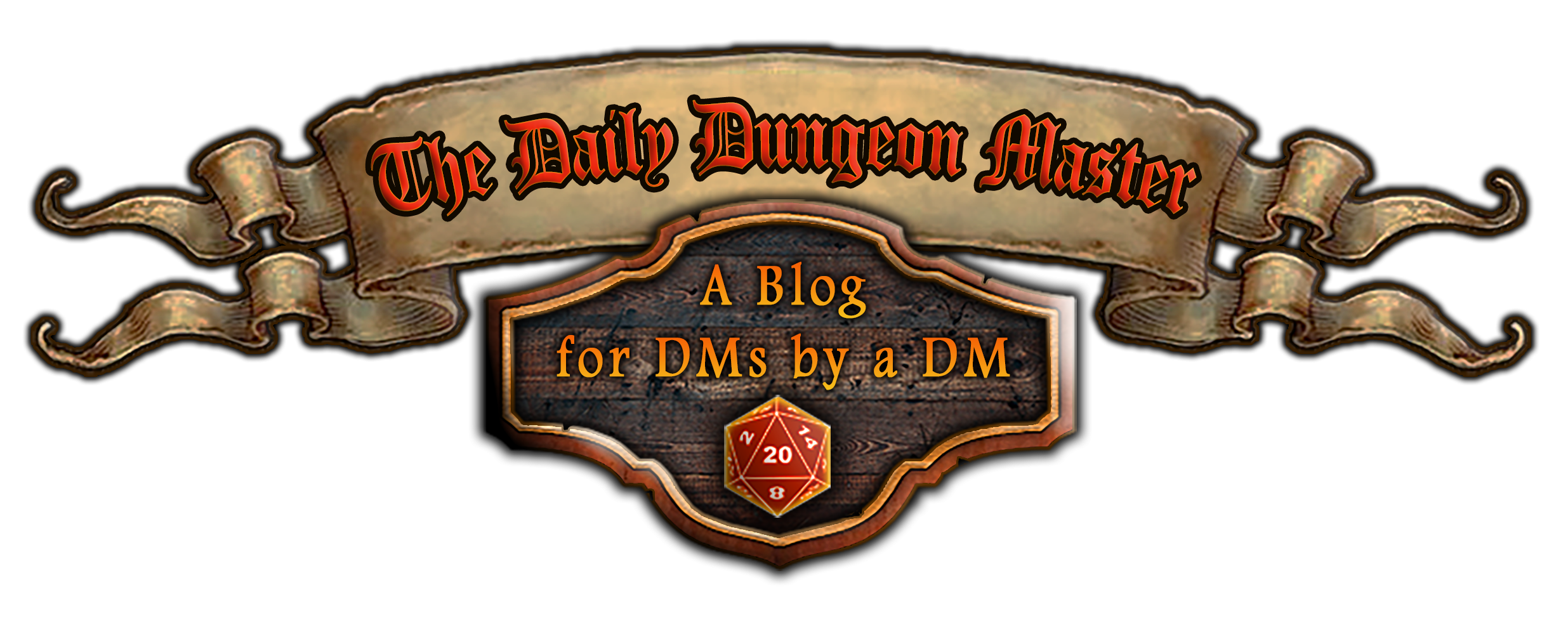Hello everyone! In this week’s installment of How To DM, I’d like to talk about railroading.
I’m sure everyone understands the term, but – just in case – let’s define the term. Railroading is a form of adventure design that essentially eliminates, or seriously limits, player choice. In reality, what we’re doing when we railroad players is playing the game for them. Our story has become more important than their participation.
Now to be fair, a certain level of railroading is inevitable because we are creating the bones of the story. This is unavoidable and not a bad thing. It is what is; so don’t stress too much about it. We’re never going to be able to design an adventure completely devoid of this level of railroading unless we’re prepared to run an entirely plot-less scenario (which can be done and can be super fun btw).

So today I’d like to talk about how to design a low-level adventuring area with the least amount of railroad tracks possible. Proper acknowledgement to D. Vincent and Meguey Baker’s Apocalypse World game whose philosophy on adventure design seriously changed the way I approach my games. I believe you can still buy pdf of the game on DriveThru, and I highly recommend them for the story design alone.
I’ll also include an example of a low-level area I designed for my new campaign as we go. You are certainly welcome to use all or part of this area as you see fit!
So, let’s talk about railroading in this week’s How To DM!
Designing the Antagonists: We talked a bit about this in previous posts, but, without forces of antagonism, your players have nothing to do. Sometimes this is where I begin because I have a clear idea of what I want to put the players up against. There’s a vampire in the countryside killing people, so go get him. However, sometimes a particular location is forefront in my mind, and you can certainly start there too. In fact, that’s what happened with this particular start to my new campaign.
Example: I sketched out a small town (mostly human), a nearby village (all Halfling) and an inn/caravan stop between the two run by a prosperous Halfling family. This was a frontier type area bordered on the north by forested hills leading into wild mountains with an extensive bog to the west. With just this amount of information, I could start thinking about what problems or dangers this area could face. I started a brain-storming list and picked a few that I thought looked interesting.
Don’t Overplan at the Start: Seriously, the more planning you do in the beginning, the more railroady your adventure is likely to be. I slapped some names on the above areas and left it at that for the start. Don’t plan out every innkeeper or every shopkeeper and their inventory. None of this is particularly important or interesting. I only include goods or services that are either necessary to the story or special in some way, and I’m not far enough along in the design to make those kinds of decisions yet. If some clear NPC’s come to mind that are interesting, jot their names down and a few words of description. It’s a waste of time to populate a whole village of Halflings if only four of them are really important.
This will drastically cut down on your prep time, as well as the number of things you have to remember and juggle as DM. Think of it like this – every time you have to stop the game to look through your notes to find the name and description of Bumbleberry Sparkle-nuts the Gnome shopkeeper who sells basic supplies and farming implements, you’re holding up the game and you’re pulling them out of the moment.
Take Lots of Notes: At least in my design efforts, I get lots of ideas sort of willy-nilly, so I take lots of notes on what hits my mind at the moment. Not all of them will be gold, but I write them down as they come and go back and edit later. Ultimately, only those items or people who add to the story – who help propel the story forward – will make it in, but, at this stage, you don’t really know enough about what’s going on to make those judgment calls.
That’s it for today. Come back next week where I’ll talk more about taking adventures off those rails!
What tips, tricks, and advice do you folks have? Put them in the comments below, so we can all share in the info. Thanks for reading, and we’ll see you next week for another installment on How To DM!
Discover more from The Daily Dungeon Master Blog
Subscribe to get the latest posts to your email.

